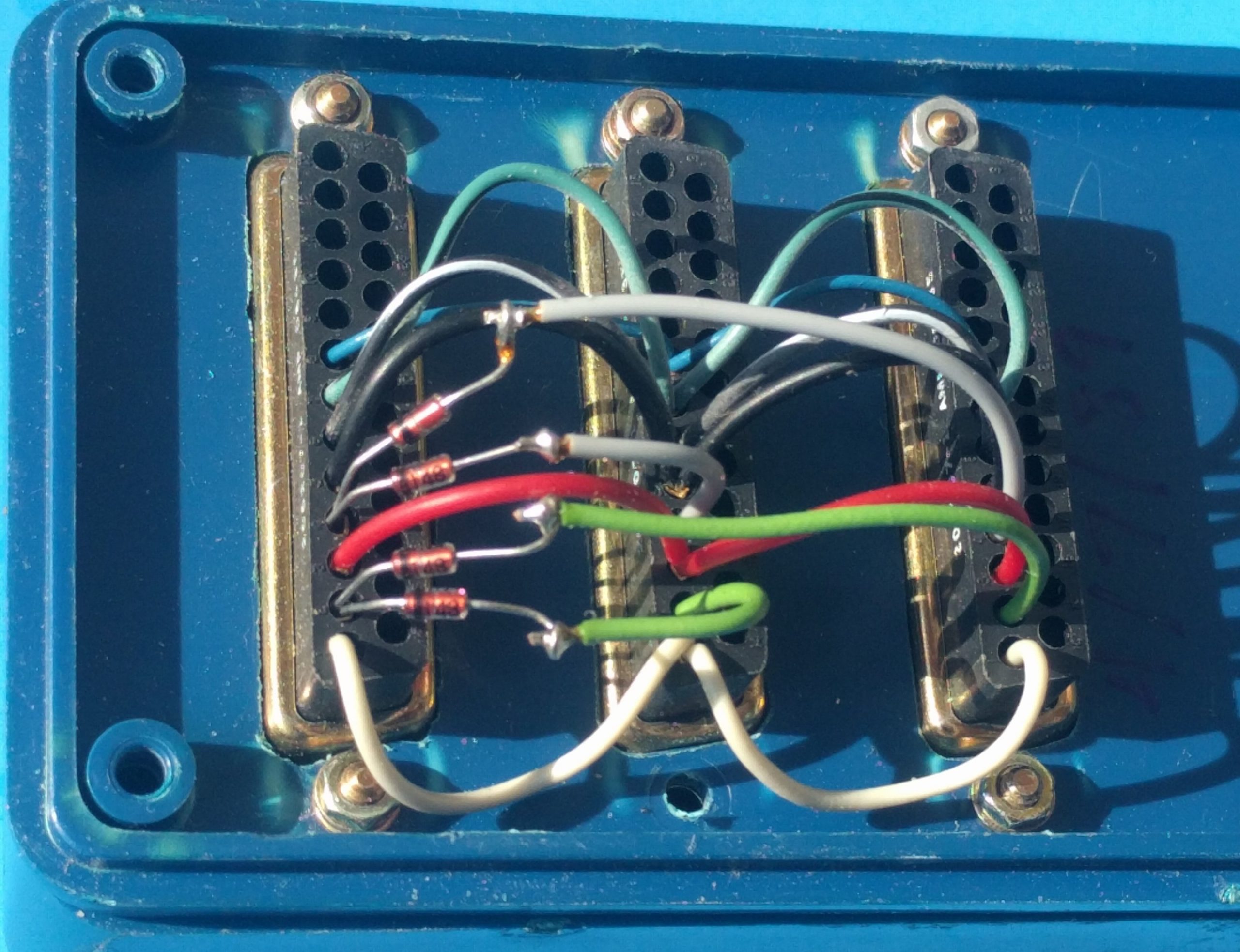I had hundreds of CRT terminals around campus, connected to 16 RS-232 ports on the mainframe computer, back in the ’80s and ’90s. The protocol was Burroughs poll-select. Each of a dozen or so terminals was given its own address by dip switch. They were all running at 9600 bps over telephone lines driven by line driver boxes, which cost hundreds each. So once a line driver box was installed in a department, we tried to share one with multiple terminals.
So I found that Black Box, Inc had a RS-232 sharing box. I could buy a 6 port one for a few hundred and replace several line driver boxes. They worked great. I could make up RS-232 cables and run them to the black box and line driver box.
But some locations didn’t have but 2 or 3 terminals. So I opened up the black box and saw how simple they were. Just some signal diodes on the transmit data (pin 2) and request to send (pin 4) of the DB-25 connectors and the remaining pins passed through. Each diode had a 15k resistor across it, to allow a small amount of current to pull the two pins negative.
So I built up some of my own for a lot less than $150 or so for the black boxes.
This one omitted the 15k resistors, and it worked okay. Just took some connectors, a pin crimper and wire. And some 1N4148 signal diodes. The left connector goes to the modem or LD box (DCE), the other connectors to the terminals (DTE).
This also allows more than one PC to share a modem or print to a serial printer. The old way was to buy a serial switch box allowing the PCs to share. As long as the users can communicate to see if the shared device is in use then this box eliminates having to manually switch the shared device.

Dan Kolis
Said, “This improvising is a deal with the devil.”
When the FNP (front end Network processor) for a mainframe costs an additional 10 grand for every rs232 port, it behooves one to take as much advantage of each individual port as possible, putting as many terminals as possible on each port. At a one to one ratio of port to terminal, 200 terminals would cost $2 million dollars!! It saved us nearly 2 million by using only 16 ports!
Second, RS-232 with four-wire, full duplex and line driver boxes is better than RS-485 because it’s not requiring any adapters or those special 37 pin connectors for RS-422. I have seldom seen any equipment with those.
I have never had any problems with errors, dropped characters or “computer sleeping sickness.” The system used standard ASCII with 7 bits, even parity for error checking. The line driver boxes were good for more than 2000 feet. The modems were 202 compatible.
Dan Kolis
Said, “I hate RS-232 a little, really.”
Well, that was all we had, or needed at the time. We had to live with it.
For multiple remote sites, we had them connected with four-wire, full duplex telephone lines from Pacific Bell, better known as Pacific Hell. The mainframe modem’s transmit signal went to the the CO (central office), and fanned out in a star configuration to all the other’s sites around town. This was the most affordable way of connecting several high schools or education centers. There were “HI-CAP” T1 circuits from point to point, but they cost thousands per month. And by the way, all this RS-232 stuff was due to Ma Bell and their 202 ‘datasets’ AKA modems that were ridiculously expensive to lease. So we (AKA just about everyone) had to ‘go with the flow’ and use what Ma Bell required.
Our EMS (energy management system) that connected bldgs on campus with the telephone cabling used RS-485 over a single pair, at 9600 bps. But the problem was that RS-485 is a BUS topology, but the telephone cabling is a STAR topology. So a single controller port would go from the controller, out to one bldg, then back to the controller and out to another bldg, etc. Zig-zagging back and forth. So the hundreds of feet between bldgs added up to thousands of feet – more than 2000. So if I put the 100 ohm terminating resistor on the far end, the furthest bldgs wouldn’t receive enough signal. So the solution was to leave the terminating resistor disconnected. 😱😧











